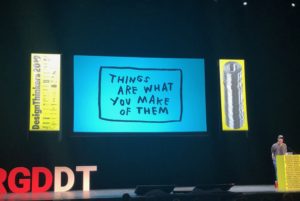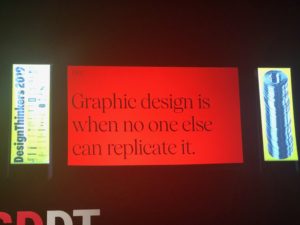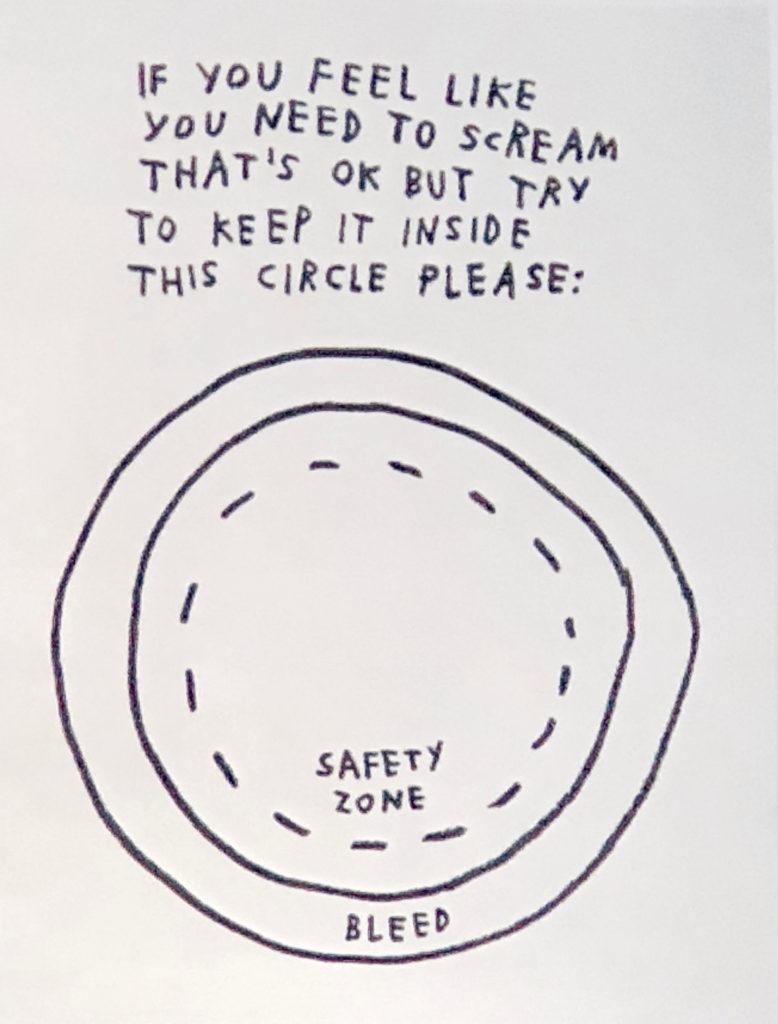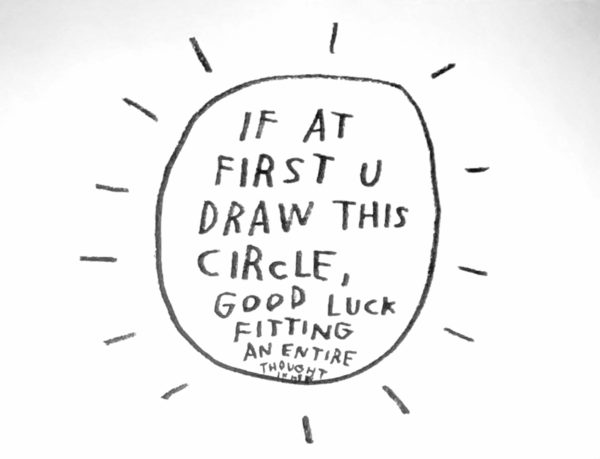


October in Toronto is exciting as it’s that time of the year when the Design Thinkers conference happens. It always comes with its fair share of inspiration, food for thought and at times blah!
Each year there is an underlying theme, and the last two years have been interesting as they were about revival of paper and print on an overall in 2017 and about self-reflection and telling a story in 2018.
This year the conference was a bit much about ‘designing our lives’ and how to be motivated and do our thing, that to me it seemed less of a serious design conference and more of a pep talk for young designers. Also, there was a lot of discussion on remote working, which has become the new trend, [I am working towards that exciting idea and hoping to get on to that band wagon soonish] and how most graphic designers are not just ‘graphic designers’ any more. Something I can totally relate to and with positivity.


So here are some of my key take away from this conference:
- Take on projects that have a soul – [Venessa Eckstein – Blok Design]
- Joy can be an act of resistance in the morally corrupt times we live in – [Tina Roth Eisenberg]
- Keep a paper trail – [Adam J. Kurtz]
- Pencils are tools but also weapons [I will make a poster out of this one for my study]
- Don’t quit your day job – some sounds advice from Adam J. Kurtz again
- Seize the power to co0ntribute – there is exceptional power in words – [Elana Rouso]
- A brand is never love at first sight and a trademark gains meaning and momentum over time [it took NBC 6 years to accept and use the peacock logo] – Sagi Haviv
- Give a client what they need and not what they think they need – [Sagi Haviv]
- Hey studio Barcelona [Veronica Fuerte] and their online store was interesting and a good one to follow on Instagram.

Then there was a panel discussion on ‘Women and Design Leadership’ and though some of the stats shared were indeed staggering [e.g. 70% of graphic design students worldwide are women but only 11% of women are creative directors] the discussion and the panel itself dint lend to anything much beyond blaming the men. It’s a topic that needs deliberation beyond the blame game and showing aggression with words or through the visual lingo.

